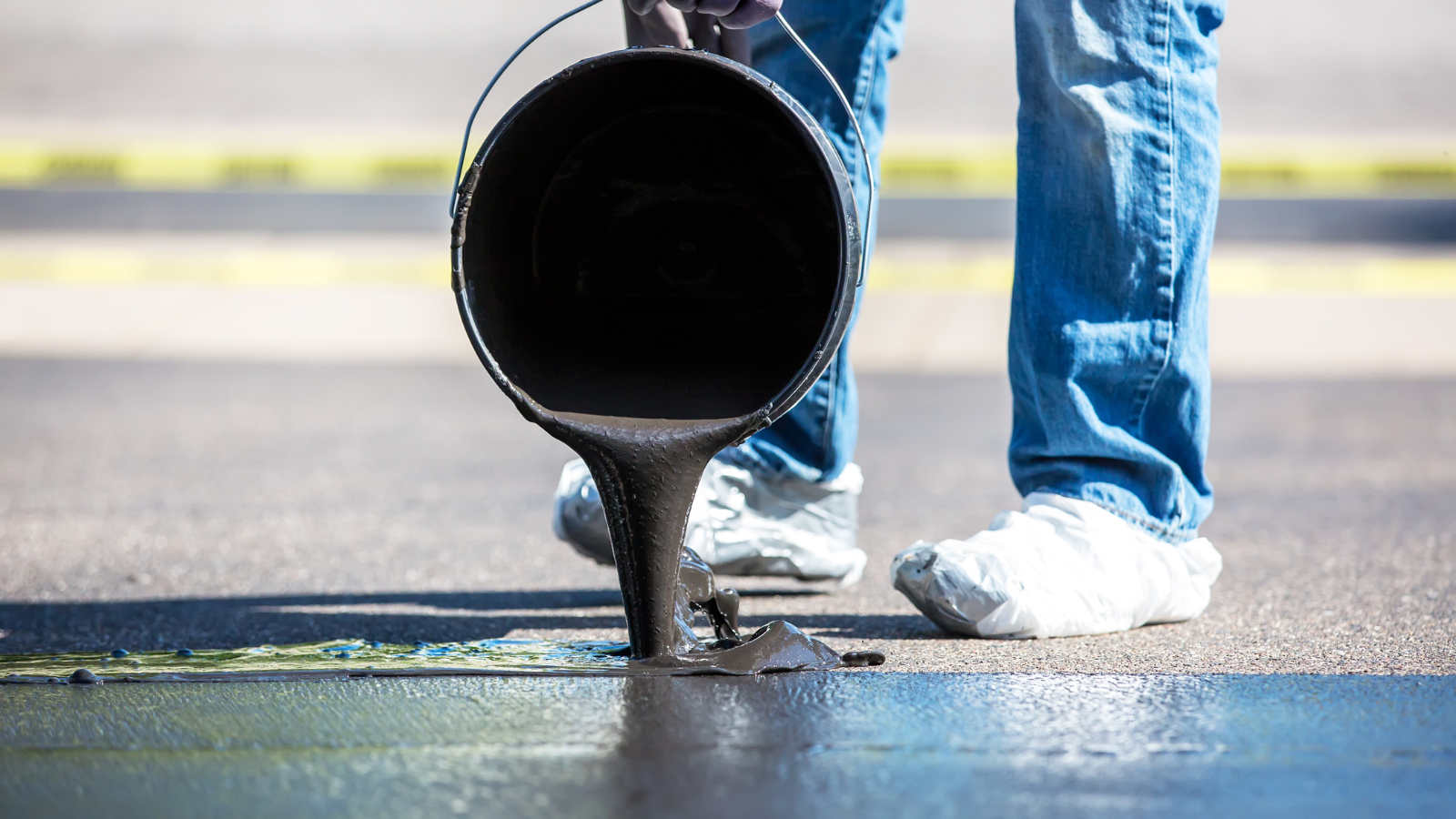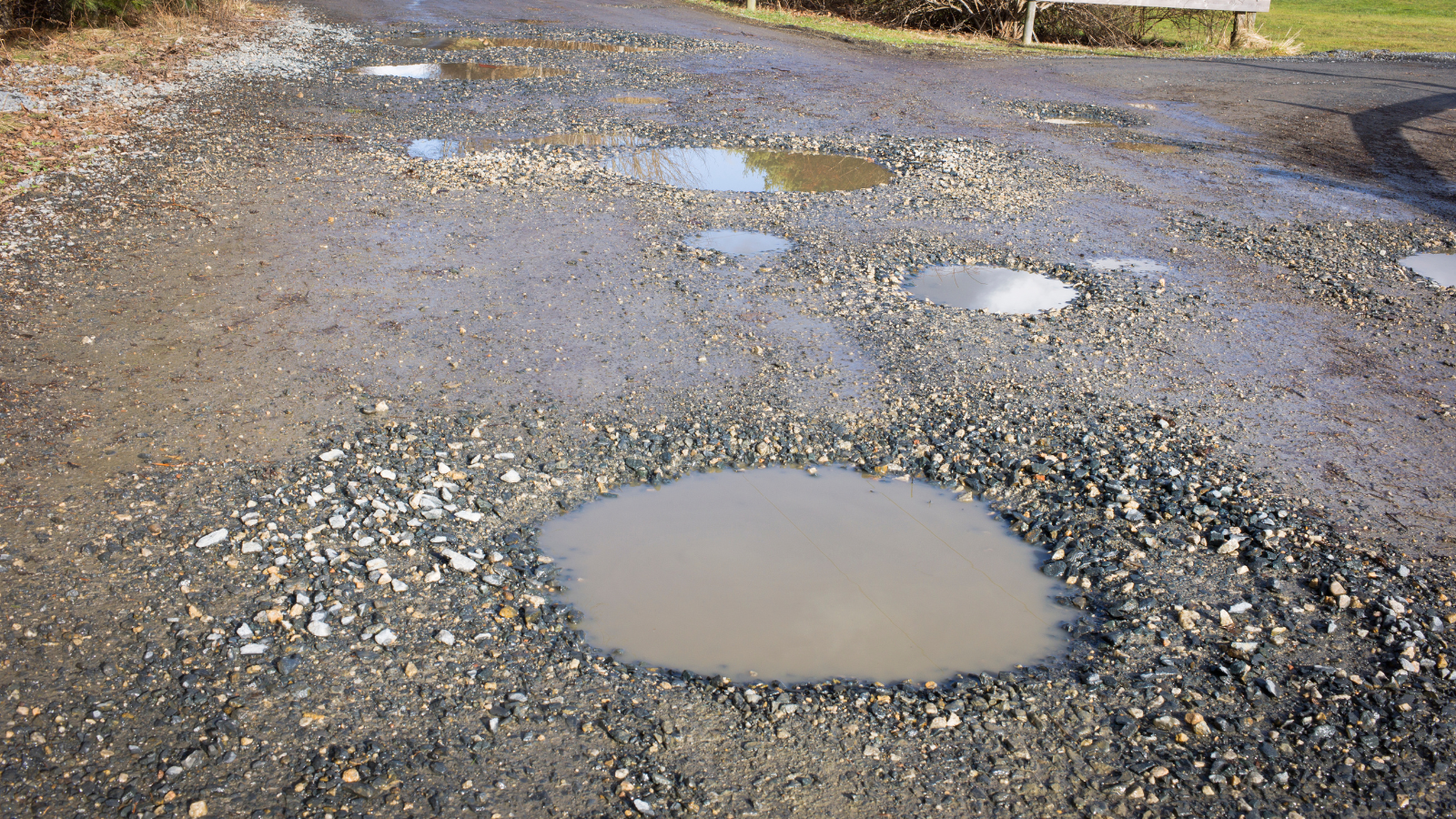Asphalt is often used for parking lots, driveways, and roads because it is durable and has good value for money. But weather, age, lack of maintenance, a lot of traffic, or even bad site preparation can sometimes cause problems.
Here, we’ll look at some of the most common problems with asphalt pavement, what causes them, and how to fix them.
A GOOD OFFENSE IS THE BEST DEFENSE
By doing regular maintenance on your asphalt pavement, you can make it last longer. Some of these steps are to keep the surface clean, seal it, and fix problems as soon as you see them. But you need to know what the problems are with asphalt pavement before you can fix them.
Here are eight common problems with asphalt pavement, how they happen, and how to fix them.
- RAVELING
Have you ever walked through a parking lot and seen gravel and grit lying around? If so, you have probably seen someone raveling. Raveling is when asphalt and rocks fall off the road and cause the pavement to break down.
Over time, the pavement gets thinner and loose gravel wears away at what’s left of the asphalt. Once the gravel has broken through the asphalt, water gets in and makes the problem even worse. Raveling can make the ground uneven (making it dangerous to walk on) and cause water to pool.
HOW TO FIX RAVELING IN ASPHALT
The first step in fixing raveling in asphalt is to get rid of any loose debris.
- If the damage is only in a small area, you can fix it with a simple asphalt patch.
- If there are big cracks in the pavement, it means that asphalt is failing everywhere. When this happens, the best long-term plan is to take out the damaged asphalt and put down new asphalt over it. This will need the help of someone who knows how to work with asphalt. Browse around this site.
- DEPRESSIONS
Depressions are low spots on the pavement that don’t go all the way through the asphalt. They are usually caused by not packing the asphalt down enough when it is paved.
If the problem isn’t fixed quickly, the water and trash that tend to collect in depressions can wear down the asphalt surface and make it less stable.
HOW TO FIX DEPRESSIONS IN ASPHALT
- A simple asphalt patch on top of the existing pavement is a quick fix for small depressions. But patching won’t fix the main problem, which is that the soil wasn’t packed down enough, so the area may continue to sink.
- For asphalt depressions to be fixed permanently, the damaged area must be removed, the bad subgrade must be replaced, and a full-depth patch must be put on top of the subgrade.
- POTHOLES
Potholes are small depressions in the surface of the pavement that look like bowls and go all the way through the asphalt layer to the base course. Potholes can have very sharp edges, and if they are in asphalt, they will get bigger over time as the water gets into the area.
Alligator cracking is the most common cause of potholes in asphalt (also known as fatigue cracking.) When alligator cracking gets bad, the cracks connect to make big chunks of pavement that can break off when cars drive over them. When a piece of pavement breaks off, it leaves a hole. This hole is called a pothole.
One of the most common problems with the pavement is that it has these well-known safety hazards. The size and roughness of the edges of the pothole can cause serious damage to cars and make it hard for people to walk.
HOW TO REPAIR HOLES IN BITUMEN
Potholes can be fixed in many different ways. Here are two common ways to do it.
TOSS-AND-ROLL
- Put the patching material in the hole without cleaning it or getting rid of water or debris first.
- Patching truck tires are used to pack down the patching material (usually 4 to 8 passes).
- Check to see if the packed patch has a small peak. If there is a hole, add more patching material and pack it down.
SEMI-PERMANENT POTHOLE PATCH
- Get the water and trash out of the hole.
- Level the sides of the holes so that they are vertical and the pavement is still there on all sides.
- Put the patching material in the hole that has been cleaned and made square. The material should be higher in the middle and get smaller as it gets closer to the edges so that it fits flush with the pavement.
- Use a vibrating plate compactor or a vibrating roller with one drum to pack down the patching material. Start packing the patching material down in the middle and work your way out to the edges. Make sure the packed patching material has a slight crown. This is done so that the next load of traffic will compact it down to the same height as the rest of the pavement.
- CRACKING ALLIGATOR
Fatigue cracking also called “alligator cracking” is a common way that asphalt pavement breaks down over time. It is called an alligator crack because the cracks look like the scales on an alligator’s back.
Alligator cracking is a type of damage caused by weight that happens when:
- a weakened base course or sub-grade,
- too thin of a pavement,
- too much traffic, or
- a combination of these
Once alligator cracks appear, the pavement will keep getting worse if nothing is done.
HOW TO TAKE CARE OF ALLIGATOR CRACKS IN ASPHALT
- Crack filler or sealcoating can be used as a short-term fix to stop water and dirt from getting into the cracks and making them worse. Next, if you can, you should limit traffic in the area because cars driving over the cracked pavement will damage the asphalt even more.
- In order to fix an area of alligator cracking in asphalt pavement permanently, you have to dig down to find out what’s wrong and then strengthen the asphalt’s base. This needs to be done by trained professionals who will take out the damaged asphalt and put it in a new sub-base and asphalt surface.
- LONGITUDINAL CRACKING
Longitudinal cracks in asphalt pavement are those that go in the direction that the asphalt was put down (along a driveway or road.) They can be caused by a number of things, such as:
- joints that aren’t well made
- Temperature changes cause asphalt to contract and expand, and
- cracks in an underlying layer show up on the surface.
Longitudinal cracks in asphalt pavement are not caused by the load.
HOW TO FIX ASPHALT LONGITUDINAL CRACKS
Smaller cracks (less than 1/2 inch wide): Use a crack sealant to stop water from getting into the sub-grade layers through the cracks and to keep the crack edges from fraying. Sealing cracks should be followed by a new coat of sealant over a larger area.
Larger Cracks (more than 12″ wide): Hire an asphalt expert to find out what’s causing your long, deep cracks and suggest a long-term fix.
- STOPPING THE CRACKS
Block cracking is a patch of large, rectangular cracks on the surface of an asphalt road that is at least one foot long. This kind of cracking usually affects a large area and can happen even where there is no traffic because it is not caused by the weight of cars.
Blocks usually crack when the asphalt binder can’t expand and contract with changes in temperature because it has hardened with age or because the asphalt binder in the mix wasn’t the best choice.
HOW TO FIX ASPHALT BLOCKS THAT CRACK
The best way to fix cracked blocks depends on how big and deep the cracks are:
Small block cracks (less than 1/2 inch wide) with little raveling: Use a crack sealant to stop water from getting into the subgrade through the cracks and to keep the edges from raveling. Sealing cracks should be followed by a new coat of sealant over a larger area.
If the cracks are more than 1/2 inch wide and have jagged edges, you should hire a professional to remove the cracked pavement layer and replace it with an overlay.
- EDGE CRACKS
Edge cracks are long cracks that form within one or two feet of the pavement’s edge. They are more common on rural roads and driveways than in the city.
Edge cracking happens when there isn’t enough support at the edge of the pavement, and because rural roads and driveways are usually narrow, cars have to drive close to these edges.
Edge cracks can also be caused by poor drainage, a bad base or sub-base, or asphalt that has shrunk. If you don’t fix edge cracks, they will get bigger and longer, and more will show up in the middle of the road.
HOW TO FIX CHIPS IN ASPHALT EDGES
It’s much better to stop edge cracks from happening than to fix them. Here are some suggestions on how to do it:
- Make sure the pavement edge has good drainage.
- Make sure you have a strong, well-put-together base set.
- As soon as the asphalt is hard, put a layer of sealcoating on it to protect it from damage caused by weather, changes in temperature, and general use.
Even if you do everything you can to stop them, edge cracks may still happen. Here’s how to fix the problem:
- Minor edge cracks: As soon as you notice damage, use crack sealant to fill in small cracks.
- More serious edge cracks: Fix the damage by patching or replacing it in a way that gets to the cause of the edge cracks.
- UPHEAVAL OF ASPHALT
Upheaval is a localized rise in the asphalt pavement caused by sub-grade swelling because of freezing or too much water. One example of this kind of trouble is frost heave.
HOW TO FIX UPHEAVAL IN ASPHALT
Since asphalt upheaval is caused by problems in the pavement subgrade, the best way to fix it is to remove the damaged area and put down a full-depth asphalt patch.
At Elizabeth Paving, we offer residential, commercial, municipal, and industrial clients high-quality asphalt paving, asphalt repair, and asphalt maintenance.
If you call (908) 458-9401 during business hours, you can be sure to get a response the same day.
Contact us right away to get your free quote.







